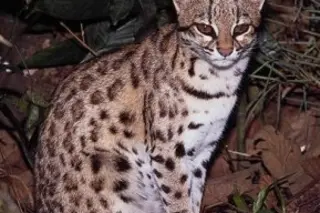The Brazilian tigrina looks a lot like a housecat. Image credit: yvetteSoler/Flickr The tigrina is a housecat-sized wild cat that roams through two different regions of Brazil: the northeast corner and the south. But DNA sequencing has shown that these two separate tigrina populations are actually two entirely different species. A team of Brazilian researchers analyzed the cats' genomes and found no evidence of inbreeding between the more numerous southern tigrinas and the sparse tigrina population in the northeast. The scientists are now categorizing the southern population as its own species, called Leopardus guttulus.
The new species of cat has darker coloration and larger spots, or "rosettes," than the northern L. tigrinus. The researchers suggest this is because the two kinds of cats have adapted to blend in to their disparate Brazilian habitats. The northern cats, with their lighter-colored coats, live in open areas with dryer, savannah shrub lands and ...














